Note
Go to the end to download the full example code.
Plot on geometry elements#
This example shows how to plot a certain field in different geometric objects such as points, lines and planes.
Imports and load model#
Import modules and set context as Premium.
import numpy as np
import matplotlib.pyplot as plt
from ansys.dpf import core as dpf
from ansys.dpf.core import examples
from ansys.dpf.core import operators as ops
from ansys.dpf.core.geometry import Line, Plane, Points
from ansys.dpf.core.plotter import DpfPlotter
from ansys.dpf.core.fields_factory import field_from_array
Load model from examples and print information:
model = dpf.Model(examples.find_static_rst())
print(model)
DPF Model
------------------------------
Static analysis
Unit system: MKS: m, kg, N, s, V, A, degC
Physics Type: Mechanical
Available results:
- displacement: Nodal Displacement
- reaction_force: Nodal Force
- stress: ElementalNodal Stress
- elemental_volume: Elemental Volume
- stiffness_matrix_energy: Elemental Energy-stiffness matrix
- artificial_hourglass_energy: Elemental Hourglass Energy
- thermal_dissipation_energy: Elemental thermal dissipation energy
- kinetic_energy: Elemental Kinetic Energy
- co_energy: Elemental co-energy
- incremental_energy: Elemental incremental energy
- elastic_strain: ElementalNodal Strain
- structural_temperature: ElementalNodal Temperature
------------------------------
DPF Meshed Region:
81 nodes
8 elements
Unit: m
With solid (3D) elements
------------------------------
DPF Time/Freq Support:
Number of sets: 1
Cumulative Time (s) LoadStep Substep
1 1.000000 1 1
Load model’s mesh and define camera position
(obtained with cpos=pl.show_figure(return_cpos=True)). This will be used
later for plotting.
mesh = model.metadata.meshed_region
cpos = [
(0.07635352356975698, 0.1200500294271993, 0.041072502929096165),
(0.015, 0.045, 0.015),
(-0.16771051558419411, -0.1983722658245161, 0.9656715938216944),
]
Create points, line and plane objects#
Create 8 points in the corners and one in the middle:
points = Points(
[
[0.0, 0.03, 0.0],
[0.0, 0.03, 0.03],
[0.0, 0.06, 0.00],
[0.0, 0.06, 0.03],
[0.03, 0.03, 0.0],
[0.03, 0.03, 0.03],
[0.03, 0.06, 0.00],
[0.03, 0.06, 0.03],
[0.015, 0.045, 0.015],
]
)
Show points together with the mesh
points.plot(mesh, cpos=cpos)
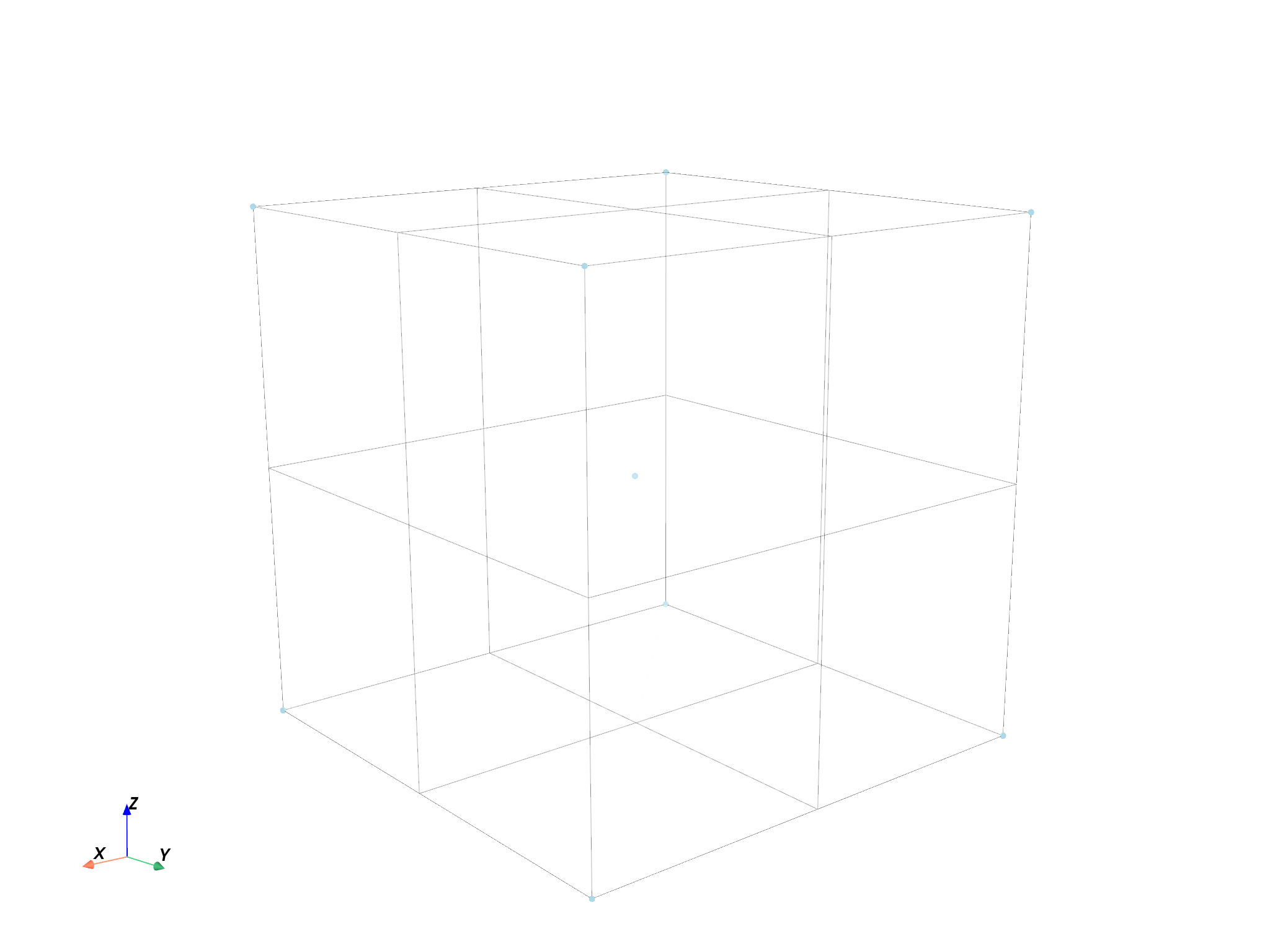
Create line passing through the geometry’s diagonal:
line = Line([[0.03, 0.03, 0.05], [0.0, 0.06, 0.0]], n_points=50)
Show line with the 3D mesh
line.plot(mesh, cpos=cpos)

Create vertical plane passing through the mid point:
plane = Plane(
[0.015, 0.045, 0.015],
[1, 1, 0],
width=0.03,
height=0.03,
n_cells_x=10,
n_cells_y=10,
)
Show plane with the 3D mesh
plane.plot(mesh, cpos=cpos)
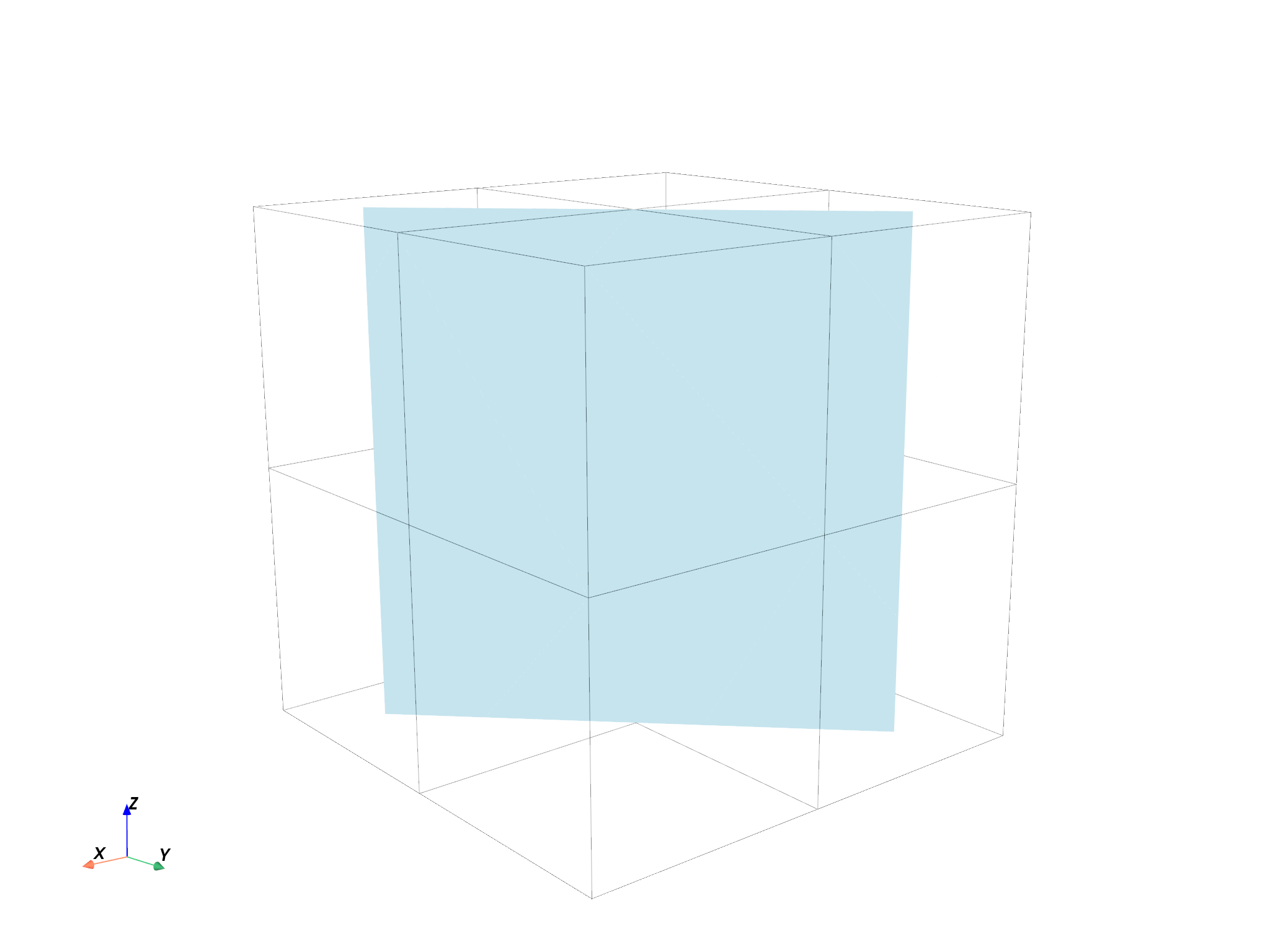
Map displacement field to geometry objects#
Get displacement field from model:
disp = model.results.displacement
Map displacement to points in Points object:
mapping_operator = ops.mapping.on_coordinates(
fields_container=disp,
coordinates=field_from_array(points.coordinates.data),
create_support=True,
mesh=mesh,
)
fields_mapped = mapping_operator.outputs.fields_container()
field_points = fields_mapped[0]
Map displacement to points in Line object:
mapping_operator = ops.mapping.on_coordinates(
fields_container=disp,
coordinates=line.mesh.nodes.coordinates_field,
create_support=True,
mesh=mesh,
)
fields_mapped = mapping_operator.outputs.fields_container()
field_line = fields_mapped[0]
Map displacement to points in Plane object:
mapping_operator = ops.mapping.on_coordinates(
fields_container=disp,
coordinates=plane.mesh.nodes.coordinates_field,
create_support=True,
mesh=mesh,
)
fields_mapped = mapping_operator.outputs.fields_container()
field_plane = fields_mapped[0]
Plotting displacement field on the geometry objects#
3D plot of Points and display mesh:
pl = DpfPlotter()
pl.add_field(field_points, render_points_as_spheres=True, point_size=10)
pl.add_mesh(mesh, style="surface", show_edges=True, color="w", opacity=0.3)
pl.show_figure(show_axes=True, cpos=cpos)
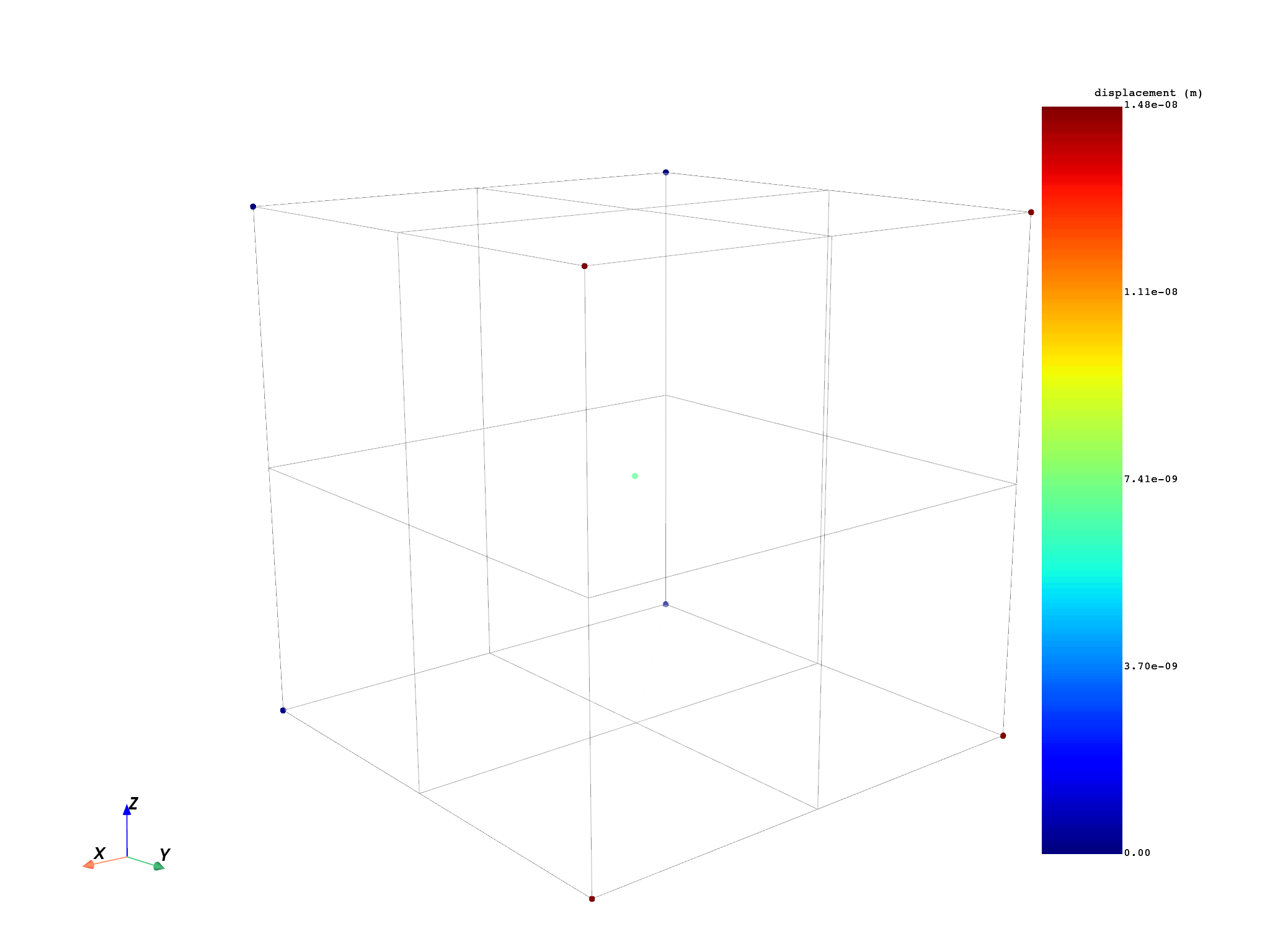
3D plot of Line and mesh. Note that the line is only displayed if some points are found inside the mesh:
pl = DpfPlotter()
if not len(field_line) == 0:
pl.add_field(field_line, line.mesh, line_width=5)
pl.add_mesh(mesh, style="surface", show_edges=True, color="w", opacity=0.3)
pl.show_figure(show_axes=True, cpos=cpos)
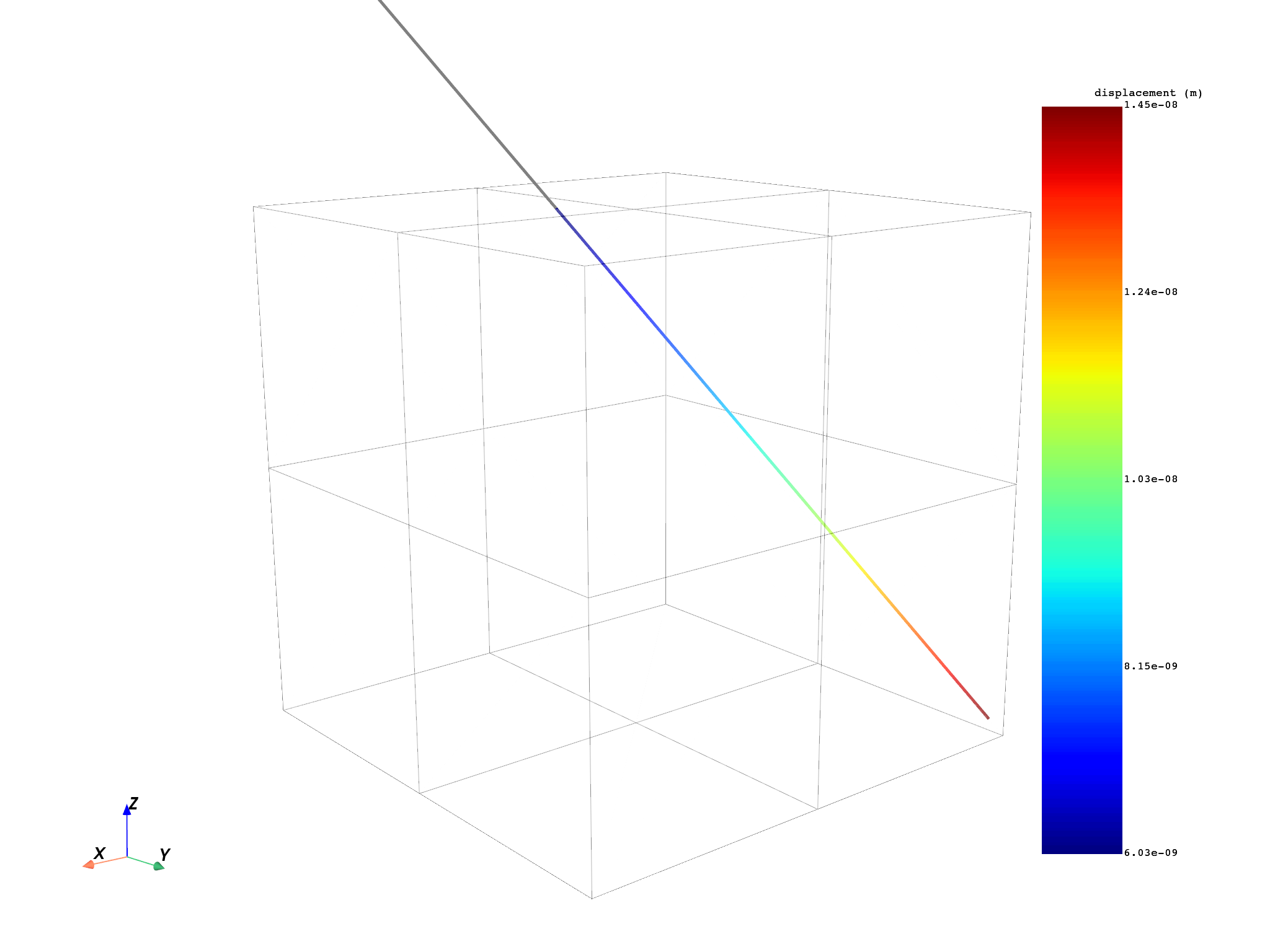
Plot Plane and display mesh in background. Note that the plane is only displayed if some points are found inside the mesh:
pl = DpfPlotter()
if not len(field_plane) == 0:
pl.add_field(field_plane, plane.mesh, show_edges=False)
pl.add_mesh(mesh, style="surface", show_edges=True, color="w", opacity=0.3)
pl.show_figure(show_axes=True, cpos=cpos)
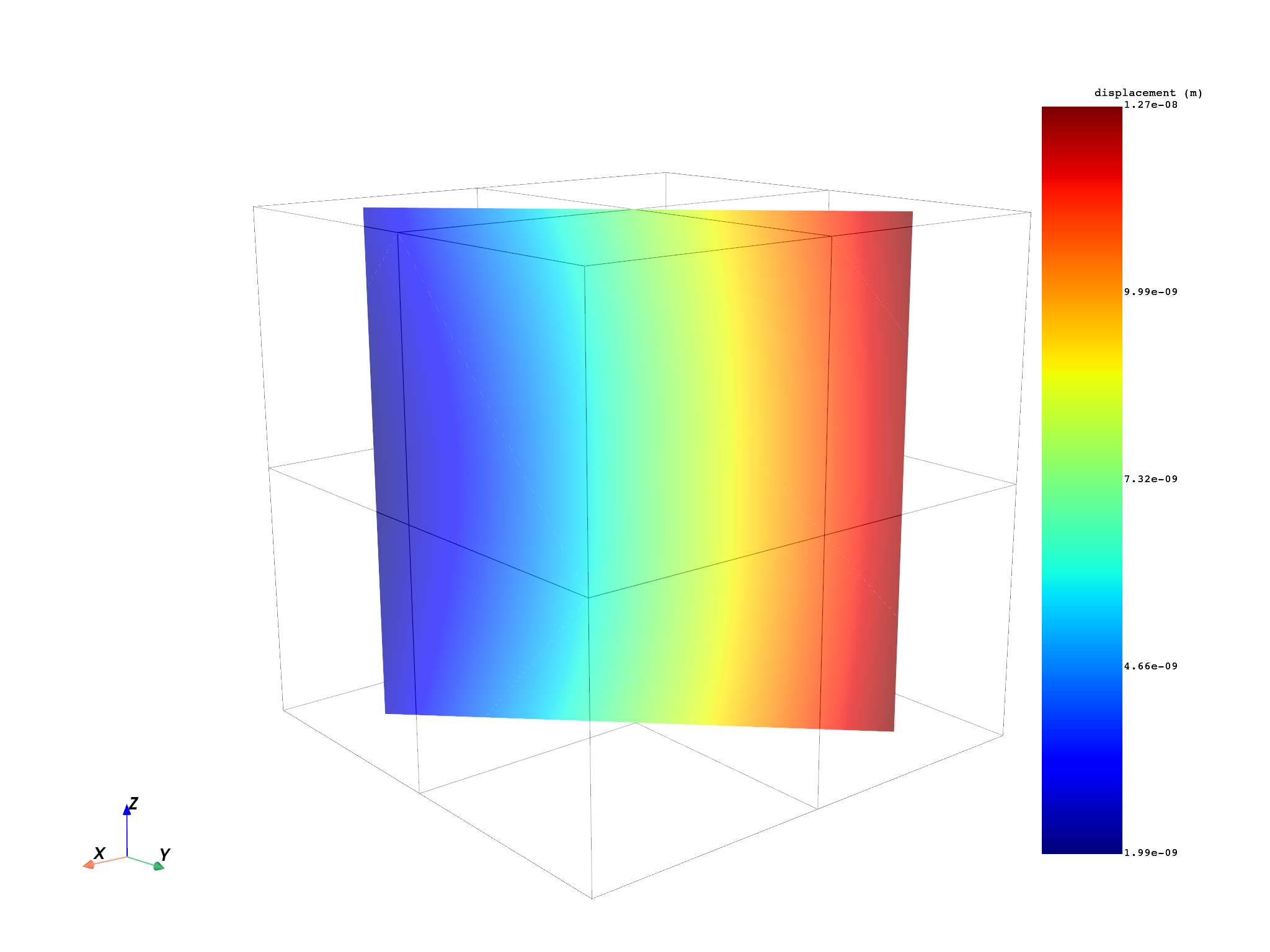
2D plot (graph) of Line (line length vs displacement field):
norm_disp = [np.linalg.norm(field_line.data[i]) for i in range(len(field_line.data))]
path = line.path[field_line.scoping.ids - 1]
plt.plot(path, norm_disp)
plt.xlabel("Line length")
plt.ylabel("Displacement norm field")
plt.show()
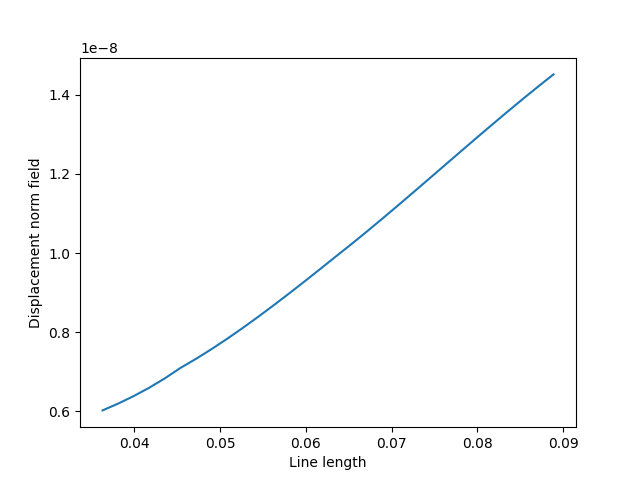
Total running time of the script: (0 minutes 2.407 seconds)